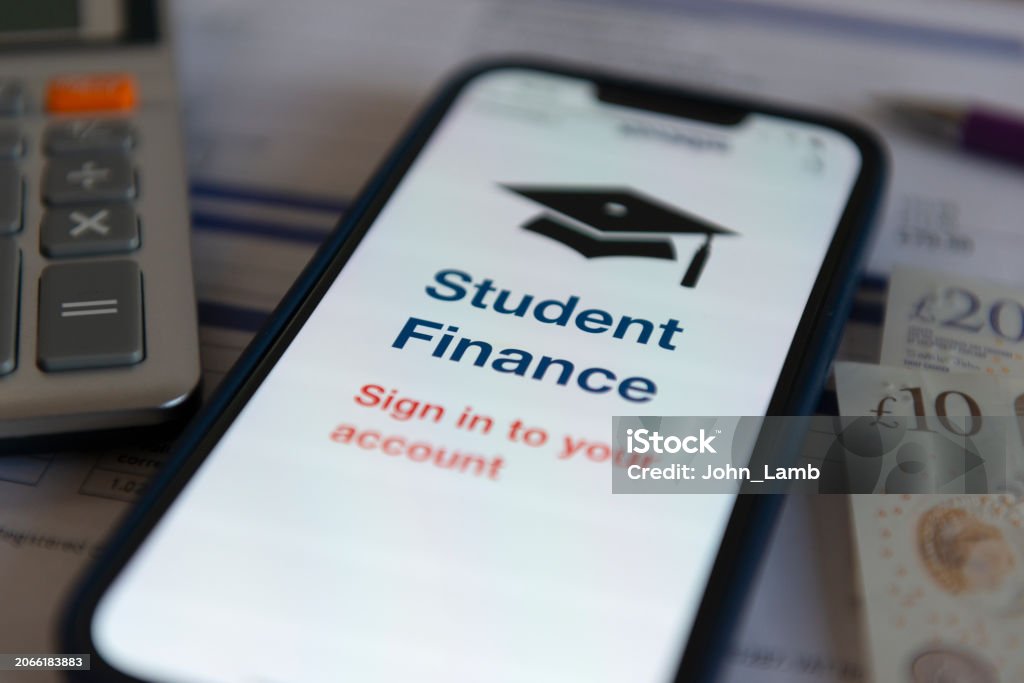Student loan debt has become a significant concern for many individuals across the country. The burden of repaying student loans can be overwhelming, and it’s crucial to understand the options available for relief. This comprehensive guide will explore various student loan debt relief programs, eligibility criteria, application processes, and strategies to manage your student loan debt effectively.
Introduction to Student Loan Debt Relief
What is Student Loan Debt Relief?
Student loan debt relief refers to various programs and strategies designed to help borrowers manage or reduce their student loan obligations. These can include loan forgiveness, repayment plans, and consolidation options. The goal is to alleviate the financial strain on borrowers and make the repayment process more manageable.
Table of Contents
Importance of Debt Relief
Debt relief is essential for borrowers struggling with large amounts of student loan debt. Without relief options, many individuals may face prolonged financial hardship, impacting their overall financial stability and quality of life. Effective relief programs can provide significant relief, helping borrowers achieve financial freedom and reduce stress.
Types of Student Loan Debt Relief Programs
Federal Loan Forgiveness Programs
Federal loan forgiveness programs are designed to forgive a portion or all of a borrower’s federal student loan debt under specific conditions. These programs include:
- Teacher Loan Forgiveness: For teachers working in low-income schools.
- Perkins Loan Cancellation: For those in certain public service professions.
- Income-Driven Repayment Forgiveness: For borrowers on qualifying repayment plans after a set period.
Income-Driven Repayment Plans
Income-driven repayment (IDR) plans adjust your monthly payment based on your income and family size. These plans include:
- Income-Based Repayment (IBR): Caps monthly payments at a percentage of discretionary income.
- Pay As You Earn (PAYE): Offers lower payments based on income, with forgiveness after 20 years.
- Revised Pay As You Earn (REPAYE): Similar to PAYE but includes spousal income in payment calculations.
- Income-Contingent Repayment (ICR): Based on income and loan balance, with forgiveness after 25 years.
Public Service Loan Forgiveness
Public Service Loan Forgiveness (PSLF) is available to those who work in qualifying public service jobs and make 120 qualifying monthly payments under a qualifying repayment plan. This program is aimed at encouraging careers in public service.
Eligibility Criteria for Debt Relief
General Requirements
Eligibility for student loan debt relief programs generally requires meeting specific criteria, such as employment status, loan type, and repayment plan. Each program has its requirements, and borrowers must carefully review these to determine their eligibility.
Specific Criteria for Different Programs
Different relief programs have unique criteria. For instance, PSLF requires employment in a qualifying public service job, while income-driven repayment plans require income documentation. Understanding these criteria is crucial for accessing the appropriate relief program.
Federal Loan Forgiveness Programs
Teacher Loan Forgiveness
Teacher Loan Forgiveness is available to teachers who work in low-income schools for five consecutive years. Eligible teachers can receive up to $17,500 in forgiveness for their federal student loans.
Perkins Loan Cancellation
Perkins Loan Cancellation is available to borrowers in specific public service professions, such as teaching or nursing. Eligibility and forgiveness amounts vary based on the profession and years of service.

Income-Driven Repayment Forgiveness
Under income-driven repayment plans, borrowers may qualify for forgiveness after making payments for 20 or 25 years, depending on the plan. This forgiveness is a significant benefit for those who have made consistent payments but still have remaining loan balances.
Income-Driven Repayment Plans
Overview of IDR Plans
Income-driven repayment plans offer flexibility for borrowers with varying income levels. These plans adjust monthly payments based on income and family size, making it easier for borrowers to manage their debt.
Income-Based Repayment (IBR)
IBR caps payments at a percentage of discretionary income and provides forgiveness after 20 or 25 years, depending on when the borrower took out the loan.
Pay As You Earn (PAYE)
PAYE sets payments at 10% of discretionary income, with forgiveness after 20 years of qualifying payments. It offers a more manageable payment structure for borrowers with lower incomes.
Revised Pay As You Earn (REPAYE)
REPAYE is similar to PAYE but includes spousal income in the payment calculation. It offers forgiveness after 20 years for undergraduate loans and 25 years for graduate loans.
Income-Contingent Repayment (ICR)
ICR calculates payments based on income and loan balance, with forgiveness available after 25 years. It provides a flexible repayment option for those with variable incomes.
Public Service Loan Forgiveness
Definition and Purpose
Public Service Loan Forgiveness is designed to encourage individuals to pursue careers in public service by offering loan forgiveness after 120 qualifying payments. It is aimed at reducing the burden for those committed to serving their communities.
Requirements for Eligibility
To qualify for PSLF, borrowers must work full-time in a qualifying public service job and make 120 qualifying payments under a qualifying repayment plan. The program has specific requirements that must be met to achieve forgiveness.
Application Process
The application process for PSLF involves submitting an Employment Certification Form annually and after making 120 payments. Borrowers should ensure they meet all eligibility criteria and maintain accurate records of their payments and employment.
State-Specific Loan Forgiveness Programs
Examples of State Programs
Several states offer loan forgiveness programs for residents who work in specific fields or meet other criteria. Examples include state-based teacher loan forgiveness programs or healthcare professional relief programs.
How to Apply for State-Based Relief
Applying for state-based relief typically involves meeting the program’s requirements, submitting an application, and providing documentation. Each state program has its application process and deadlines.

How to Apply for Student Loan Debt Relief
Steps to Apply
Applying for student loan debt relief involves researching available programs, determining eligibility, and submitting the necessary application forms. Borrowers should follow each program’s specific application procedures to ensure successful relief.
Common Mistakes to Avoid
Common mistakes include missing deadlines, failing to provide required documentation, and not meeting eligibility criteria. Borrowers should carefully review application requirements and seek assistance if needed.
Documentation Needed
Documentation required may include proof of income, employment verification, and loan statements. Gathering all necessary documents in advance can streamline the application process.
Impact of Student Loan Debt Relief on Credit Scores
How Relief Affects Credit Scores
Debt relief can impact credit scores in various ways. Forgiveness or repayment plans may initially affect credit scores, but consistent payments and managing debt effectively can improve scores over time.
Monitoring Your Credit Post-Relief
It’s essential to monitor credit scores regularly to ensure that debt relief is accurately reflected and to address any issues promptly. Checking credit reports can help maintain financial health.
Tax Implications of Student Loan Forgiveness
Overview of Tax Consequences
Student loan forgiveness can have tax implications, depending on the type of relief received. Some forms of forgiveness are considered taxable income, meaning borrowers may need to pay taxes on the amount forgiven. Understanding these implications is crucial for financial planning.
Taxable vs. Non-Taxable Forgiveness
- Taxable Forgiveness: Generally, forgiveness under income-driven repayment plans and some federal programs may be considered taxable income. This means that borrowers will need to include the forgiven amount as income on their tax returns and may owe additional taxes.
- Non-Taxable Forgiveness: Certain types of forgiveness, such as Public Service Loan Forgiveness, are not taxable under current IRS rules. This means borrowers who qualify for PSLF will not face a tax bill for the forgiven amount.
Alternatives to Federal Debt Relief
Refinancing Student Loans
Refinancing involves taking out a new loan to pay off existing loans, often at a lower interest rate. This can reduce monthly payments and total interest costs but may not offer the same benefits as federal relief programs, such as forgiveness or flexible repayment options.
Consolidation Loans
Loan consolidation combines multiple federal loans into a single loan with a fixed interest rate. This can simplify payments and may offer some benefits, but it can also result in the loss of certain borrower protections and benefits.
Employer Assistance Programs
Some employers offer student loan repayment assistance as a benefit. These programs can help reduce debt and may complement other relief options. Checking with your employer about available benefits can provide additional support.
Strategies for Managing Student Loan Debt
Budgeting Tips
Creating a budget is essential for managing student loan debt effectively. Tracking income and expenses, setting financial goals, and prioritizing debt repayment can help borrowers stay on track.
Additional Repayment Strategies
- Extra Payments: Making extra payments towards the principal can reduce the overall interest and shorten the loan term.
- Snowball Method: Paying off smaller loans first can provide a psychological boost and help manage debt more effectively.
- Debt Avalanche: Focusing on paying off high-interest loans first can save money over time.
Seeking Financial Counseling
Financial counseling can provide valuable guidance for managing student loan debt. Counselors can help create personalized repayment plans, offer budgeting advice, and assist with debt management strategies.
Common Myths About Student Loan Debt Relief
Debunking Popular Myths
Several myths surround student loan debt relief. Understanding the truth behind these misconceptions can help borrowers make informed decisions:
- Myth: All student loan debt can be forgiven easily.
- Fact: Forgiveness typically requires meeting specific criteria and may not be available for all types of loans or borrowers.
- Myth: Income-driven repayment plans are always the best option.
- Fact: While IDR plans offer flexibility, they may result in higher overall costs compared to other repayment options.

Clarifying Misconceptions
It’s important to verify information about student loan debt relief from reliable sources. Misunderstandings and misinformation can lead to poor financial decisions and missed opportunities for relief.
Resources and Support for Student Loan Borrowers
Government Resources
The U.S. Department of Education and Federal Student Aid provide valuable resources for student loan borrowers, including information on repayment plans, forgiveness programs, and application procedures. Visiting their websites can offer guidance and support.
Non-Profit Organizations
Several non-profit organizations offer assistance with student loan debt, including counseling, repayment planning, and advocacy. Organizations such as the National Foundation for Credit Counseling (NFCC) can provide additional support.
Online Tools and Calculators
Online tools and calculators can help borrowers estimate monthly payments, assess repayment options, and explore forgiveness scenarios. Utilizing these resources can assist in making informed decisions about debt relief.
Future of Student Loan Debt Relief
Upcoming Legislation and Changes
Student loan debt relief policies and programs are subject to change due to new legislation and government actions. Staying informed about potential changes can help borrowers prepare and adjust their repayment strategies accordingly.
Predictions and Trends
The future of student loan debt relief may include expanded programs, revised eligibility criteria, and new repayment options. Monitoring trends and updates in student loan policies can provide insight into upcoming opportunities for relief.
Conclusion
Summary of Key Points
Student loan debt relief offers various options for managing and reducing student loan obligations. Understanding the types of relief available, eligibility criteria, and application processes can help borrowers navigate their options effectively.
Final Thoughts on Seeking Relief
Seeking student loan debt relief requires careful consideration and informed decision-making. By exploring available programs, understanding their implications, and utilizing available resources, borrowers can take steps toward financial freedom and reduce the burden of student loan debt.
